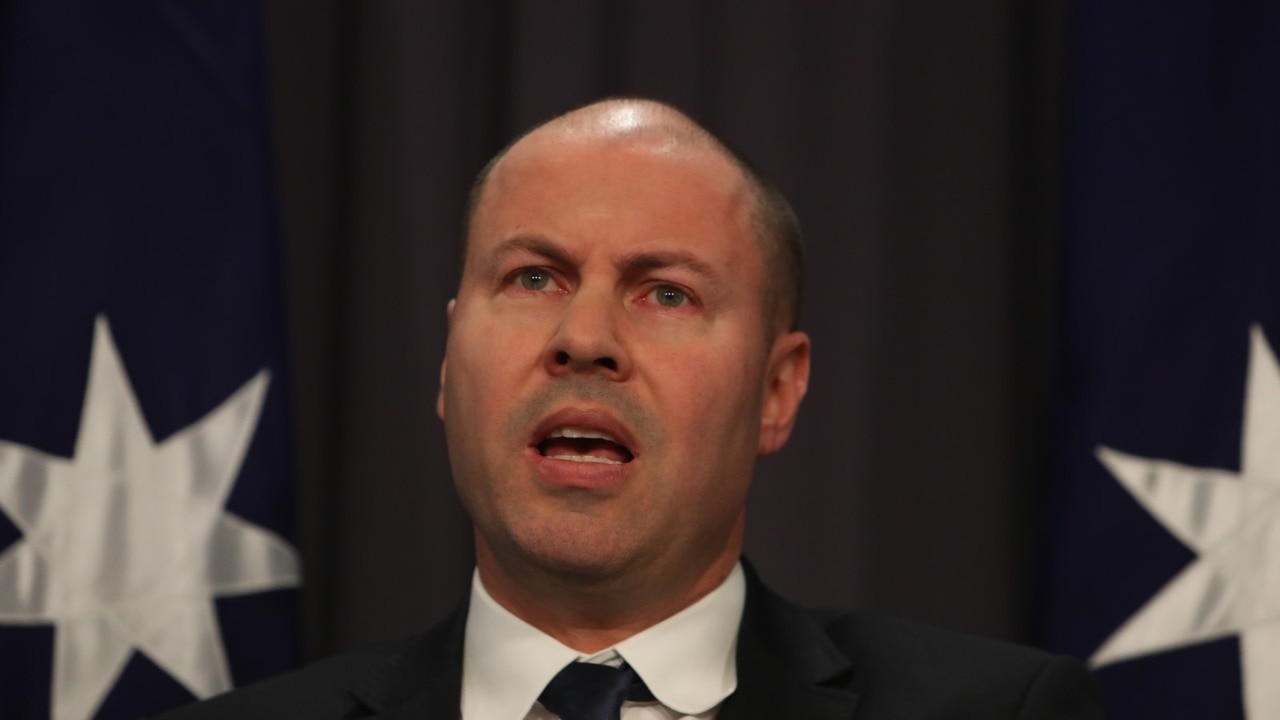Terry McCrann: Big banks had a pretty good year
The big profit plunges reported by the big four banks do not give an accurate guide to how they actually performed through the year — they’ve come through the pandemic pretty well, writes Terry McCrann.

Terry McCrann
Don't miss out on the headlines from Terry McCrann. Followed categories will be added to My News.
Like — most of — the rest of Australia, the big four banks have actually had a pretty good pandemic.
The big profit plunges they reported do not give an accurate guide to how they actually performed through the year to end-September (for three of them) and to end-June for the CBA.
They were still working through the direct costs of the royal commission — while Westpac had its $1.4bn “Austrac moment” all on its own. The CBA, of course, got nicked and paid less well before this year.
Plus they all moved to “over provide” for possible bad debts that might come out of this recession.
NAB put aside a hefty $2.8bn, or fully one third of its $8.2bn operating profit for such — to stress, possible not yet actual — bad debts.
Take all these unusual impacts out and the real underlying operating profits looked pretty good, when you consider they were coming through the worst recession we’ve had in nearly 100 years, with businesses being obliterated and workers losing their jobs en masse.

The underlying operating profits of both NAB and Westpac (before their big bad debt provisions and not counting the one-offs like the Austrac payment) were down only 12 per cent. ANZ’s, extraordinarily, was essentially unchanged.
All of them were still generating underlying profits of high single-digit returns on shareholder equity — not bad if you can get it in a world of zero interest rates, especially for their own depositors.
They all were able to pay — yes, reduced and in the case of the three September balancers, much reduced — dividends; and they emerged into their new, hopefully, post-pandemic, year with close to the strongest balance sheets of any group of banks in the world.
Apart from their largely home-lending based franchises, two big things made huge contributions to and indeed quite specifically for them.
The first was the government’s $100bn JobKeeper spending. That kept the wolf — the old-fashioned one, not the more recent one of Wall St — from the figurative (and indeed, literal) doors of their home-loan borrowers.
Almost all the “interest deferrals” for a big chunk of their mortgage books will have worked their way out by the end of this month, with almost all those borrowers returning smoothly to normal repayments.
Only a tiny fraction has moved into the “stress category”.
In NAB’s case 110,000 deferrals were granted; it’s only got 34,000 left and almost all of them will be gone by the end of the month.
Well over 90 per cent have gone back to normal repayments, only 2 per cent have had their deferrals extended and just 5 per cent have been put in the stressed category.
Now all this has essentially happened before JobKeeper started to be wound back at the end of September, with another cut at the end of December and then the final cut to zero at the end of March.
What happens to the banks’ borrowers into 2021 obviously all hangs on what happens to the economy more broadly. And that in turn all depends on the virus and the vaccine.
So my opening sentence should have added, a “good pandemic, so far”.

The second big thing that helped the banks — starting small in the year just ended, but kicking in big time in this new year — is the Reserve Bank’s 0.25 per cent, now “zero-point one”, package and especially the TFF part.
Under the TFF, the RBA is for the first time directly lending to the banks what is on track to grow pretty quickly to $200bn, at an interest rate which was initially 0.25 per cent and will now be 0.1 per cent.
That’s effectively free money. It’s certainly much cheaper than the banks would have to pay in the global wholesale market.
In the year just ended, the TFF provided around 3 per cent of NAB’s funding — and it would have been much the same for the other banks.
So it made a real contribution to its — and all their — profitability but not a major one.
In the new year, though, once the banks fully draw down their shares, they’ll be getting around 8-10 per cent of their funding at this 0.1 per cent. That will make a very serious contribution.
The RBA is doing it very deliberately. It wants to sustain bank funding — and so their on-lending — both in quantity and cost terms. The idea is that competition for borrowers will pass the benefit on.
But if indeed the economy is picking up and we can keep the virus if not at bay then under control, and people keep pouring back into property thanks to these very low home-loan rates, the banks might be under no great pressure to cut their interest margins which are still around 2 per cent.
It also means the banks are under less pressure to keep attracting depositors, although of course the 8-10 per cent of their money they’ll be getting effectively free from the RBA could never replace the 60 per cent or so of their funding they get from depositors.
So right at the moment it’s all pretty good for the banks, whereas in past decades interest rates this low would have caused them severe pain.
The RBA has guaranteed both the zero rates and the free money pretty much out to at least three years and arguably as much as five years.
Originally published as Terry McCrann: Big banks had a pretty good year

